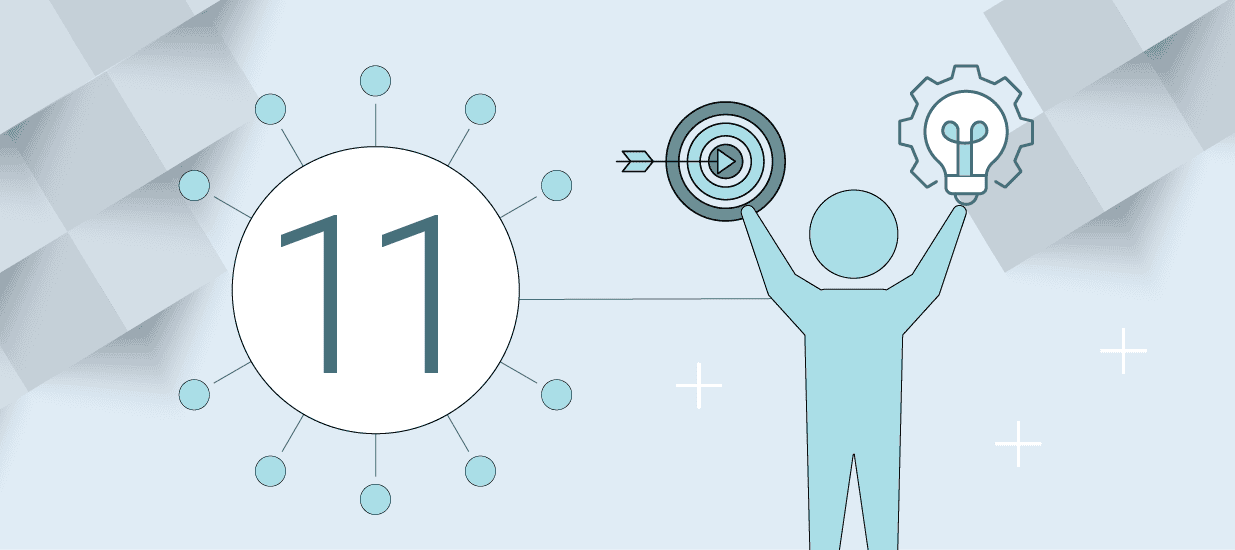Recently I partnered with the highly respected attitude collection group Edison Research to take a close look at the current state of hate. We discussed customer service-expectations and outcomes with more than 2,000 American consumers who have complained about a company in the previous 12 months, with the study participants representing a statistically valid cross-section of ages, incomes, racial make-ups and technology aptitudes.
And what we found shocked us, both in its comprehensiveness and in its simplicity: Answering complaints increases customer advocacy, across all customer-service channels. This is true in some more than others, but the effect is present in every channel. If you answer complaints anywhere, it increases customer advocacy.
Conversely, not answering complaints decreases customer advocacy, across all customer-service channels. This is true in some channels more than others, based on traditions and corresponding expectations. But the negative effect of staying silent is also universal.
Customers feel better whenever and wherever you respond, and they feel worse whenever and wherever you don’t. Our exclusive research found that answering complaints has a massive, consistent and linear relationship to customer satisfaction or dissatisfaction. What else could you possibly do as a business that would produce similar results across the board, other than perhaps dramatically raising or lowering prices?
This research was augmented by more than 50 interviews to form the strategic and tactical basis for my new book, Hug Your Haters: How to Embrace Complaints and Keep Your Customers. The book has a simple, powerful success equation that sadly isn’t de facto among companies today: Answer every complaint. In every channel. Every time.
In every channel. This concept of interacting with customers in the venues they prefer is a critical part of the Hug Your Haters approach. It’s about respecting the customers’ right to select their own feedback mechanism and approaching customer service accordingly.
Admittedly, it’s not easy to hug your haters. It takes cultural alignment, resource allocation, speed, a thick skin and an unwavering belief that complaints are an opportunity. But there are businesses that are already living by the rules of Hug Your Haters, and I hope you’ll join their ranks.
How KLM Royal Dutch Airlines Hugs Their Haters
If there is one company in the world that epitomizes the philosophy and lessons of Hug Your Haters, it’s KLM, the official national airline of the Netherlands, based in Amsterdam.
Compared to airlines in the United States, KLM’s home market is quite small, with a population of approximately 16 million people living in the Netherlands. Consequently, KLM’s primary business model is to transport as many people as possible from one part of the world to another. A major reason KLM has been able to succeed in that endeavor is that they differentiate their brand with customer service.
According to Karlijn Vogel-Meijer, global director of social media at KLM, “We believe that service is the basis of everything we do on social media, and that providing excellent customer service, that is the basis of everything we do.”
In social media alone (not counting telephone and email support), as of this writing, KLM has 150 employees answering questions and addressing complaints, 24 hours per day, seven days a week, in 14 languages. They are hugging haters in Dutch, of course, and also in English, Japanese, German and even Turkish. They leave no interaction unanswered and even provide a response-time estimate at the top of their Facebook and Twitter pages, updated every five minutes. So, if you want to ask a question of KLM, or sound off to them on Twitter, a quick glance at twitter.com/klm shows that you can expect a response within 11 minutes (at the exact moment I wrote this sentence).
How’s that for accountability and setting expectations for customers?
But KLM’s journey to fully formed customer-service powerhouse was triggered not by a strategic planning session or executive decree, but by a volcano. In 2010, a massive eruption of the Eyjafjallajökull volcano in Iceland caused the cancellation of 107,000 flights over an eight-day period, impacting the travel plans of approximately 10 million passengers.
As Vogel-Meijer recalls, it was chaos at KLM. “We had thousands of our customers trying to reach us, all at once. Obviously, back then, they first turned to e-mail and phone. But then they turned to social media. We had a social media presence at the time, just like a lot of other brands, but we were just trying to figure out what to do with Facebook and Twitter. We just posted some nice stuff and that was mainly it. Suddenly, there was a flood of questions coming in from people asking us ‘I need to go to my wedding. How do I get to my wedding? I’m not able to get out of the Netherlands. I’m not able to get out of wherever.’”
One decision changed the short-term nature of how KLM dealt with their volcano-impacted customers, and this decision ultimately altered the corporate culture and fundamental DNA of the company. Vogel-Meijer remembers it clearly: “There was this specific moment where an employee went into the office of our vice president of e-commerce at the time and said, ‘Listen, we can either pretend the questions are not there or we can start answering. But be aware, if we start, there won’t be any way back.’ And our vice president said, ‘answer them all.’”
Because planes were grounded, many KLM team members were sitting around the airline’s home base at Schipol airport, talking about airborne ash. So once the decision was made to engage every customer and answer every question and complaint, it was an all-hands-on-deck scenario.
“There were hundreds of people from all over KLM at tables with their laptops, answering questions from customers, and that was the start of our social media service program,” Vogel-Meijer recalls.
KLM didn’t stop responding to their customers once this particular crisis ended. Rather, they’ve just codified and expanded their service. And how could they stop, even if they wanted to do so? You can’t very well say to your customers, “Yeah, that amazing customer service we provided on Facebook and Twitter? That was just a volcano special!”
They never stopped, and neither will you. Because once you start hugging your haters and embracing complaints, you’ll never want to let them go.
Answering every complaint and question, in every channel, every time, requires substantial effort and commitment. But there is a significant—and often, transformative—business case for this method, beyond just the psychically satisfying notion of answering complaints because “it’s the right thing to do.”
Why Hugging Your Haters Makes Business Sense
Your business improves in four ways when you hug your haters.
Benefit 1: Turning Bad News Good
At its core, the most important reason to answer complaints and hug your haters is that it at least gives you a chance to recover and retain an unhappy customer. Far too many businesses care too little about retention, placing much emphasis on outbound marketing and the attraction of new customers, with comparatively little attention paid to keeping the customers they’ve already paid to get. After all, a 5 percent increase in customer retention boosts profits by 25 to 85 percent.
You may have heard the saying, “Advertising is a tax paid for being unremarkable.” It’s usually credited to Robert Stephens, the founder of the computer and electronics repair company GeekSquad (now part of Best Buy). A better and more accurate phrasing of that concept might be, “Advertising is a tax paid when you’re not good enough at retaining your current customers,” and you can attribute that one to me.
Benefit 2: Creating Customer Advocacy
It is a remarkable psychological phenomenon. When people have a problem and that problem is solved, they love you for it. It’s the business version of the axiom, “The best measure of a man isn’t when things are going well, but rather when things are going poorly.”
This dynamic—the ability to actually create customer advocacy using complaints and problems as a springboard—has been documented for decades. In his book The Squeaky Wheel, Guy Winch, Ph.D, recounts how, in 1978, John Goodman and his fledgling company, the Technical Assistance Research Program (TARP) were tapped by the RAND Corporation to oversee studies on customer service in the U.S. government.
This and a second set of studies found that when complaints are handled to our satisfaction, we actually become more loyal than we were before we had
the problem.
That loyalty produces not just happy, talkative customers, but real revenue. You probably believe in your heart that customer satisfaction matters, but it matters in your wallet as well. Remarkable research from the Bain & Company management consulting firm found that in the U.S banking industry, customer advocates are each worth $9,500 more than detractors.
Benefit 3: Gathering Insights and Intelligence
Answering customer complaints can recover customers and cause them to rush to your defense and actually spend more money with you over time. But one of the least discussed benefits of hugging your haters and paying attention to customer feedback is the potential to glean insights about your business that can improve your operations and processes. After all, very few people complain without a reason to do so. Are you listening—really listening—to each of them?
It’s important to recognize that haters actually take time to let you know what they think, giving you an opportunity to take action that not only could potentially mollify them, but also fix the underlying cause of the problem, eliminating complaints from the next batch of customers. Haters are the canaries in the coal mine. They are the early warning detection system for your business.
Remember, haters are not the problem. Ignoring them is.
The real problem for your business are the people who have a poor experience but are not passionate enough about you and your company to take the time to say something about it in a form or fashion that you can find and act upon. They are the “meh” in the middle, and they are what kills businesses.
Renowned digital marketer, technology investor and author of Jab, Jab, Jab, Right Hook, Gary Vaynerchuk has a blustery style that draws complaints from people who do not like his approach. But that’s the group to which he pays the most attention historically. “I’m a big fan of people that are publicly negative about you, because the ‘invisible negative’ crew is the thing I’m most scared about,” he says.
John Goodman’s research at TARP also found that 95 percent of disgruntled customers never complain to the entity responsible for their dissatisfaction.
That 5 percent of your unhappy customers who do care enough to complain give you a roadmap for how to fix whatever ails your business. Because while the people who take the time to complain are a small percentage of your overall customer base, the conditions of their dissatisfaction apply to all customers. In this way, the haters are the vocal representatives of everyone your company serves.
Benefit 4: Differentiate From Your Competition
So few companies hug their haters today that those that make this commitment are almost automatically differentiated and noteworthy when compared to their competitors.
Customer service and customer experience matters. And it’s going to matter even more in the future. The world is inextricably linked now, by transportation and technology that was unthinkable 20 years ago. This global interconnectivity mutes the advantages of price and location that businesses formerly used to create market inefficiencies and gain a disproportionate share of customers.
In today’s world, meaningful differences between businesses are rarely rooted in price or product, but instead in customer experience. How does each provider make you feel when you interact with them? It is in the provision of standout, noticeable customer experience (the real-world embodiment of the brand promise) where great companies shine and mediocre companies shrink.
The customer intelligence consultancy Walker Information released a research report in 2014 that stated that in business-to-business scenarios, customer experience will be more important than price by 2020.
Realize, however, that to truly differentiate your business with customer experience, you have to clearly outpace your competition in this regard. Making a commitment to “be better at customer service” isn’t going to get the job done. Instead, as Walker suggests, you need to “create an unrelenting focus on the customer.”
The best marketers are those that can weave together customer acquisition, customer retention and customer experience in a coherent and holistic system. But it’s not easy, especially given that customer care has traditionally fallen outside the realm of the marketer. But with so much of today’s customer interactions playing out in public in social media and beyond, marketers have a role (and a responsibility) to broaden their scope.
Book excerpt from Hug Your Haters: How to Embrace Complaints and Keep Your Customers Happy by Jay Baer. Copyright © 2016 Convince
& Convert. All rights reserved. Published by Portfolio | Penguin.
Hug Your Haters is full of resources to assist in this transformation: many case studies; the Hatrix—a poster that illustrates who complains, where, why, and what they expect; a full discussion of cutting-edge blends of marketing and customer service; and much, much more. Find more at HugYourHaters.com.
Author
-

The Pragmatic Editorial Team comprises a diverse team of writers, researchers, and subject matter experts. We are trained to share Pragmatic Institute’s insights and useful information to guide product, data, and design professionals on their career development journeys. Pragmatic Institute is the global leader in Product, Data, and Design training and certification programs for working professionals. Since 1993, we’ve issued over 250,000 product management and product marketing certifications to professionals at companies around the globe. For questions or inquiries, please contact [email protected].
View all posts








